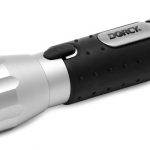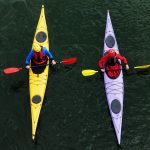There are many upsides to kayaking. It is more economical than paddling; the investment in a kayak, oars, and other supplies will be noticeably lower than what you would expend on a canoe. Second, kayaking is more manageable when it comes to maneuverabilit.
It can be quite challenging to keep from toppling in a canoe for a long duration. Thirdly, kayaks are more versatile than canoes. These boats are created to be used on both tranquil rivers and fast-moving lakes.
Canoes are often utilized for fun activities on peaceful, slow-moving rivers. Kayaks are used for more specialized fishing or hunting. If you desire a more peaceful journey, the Canoe is the ideal choice.
For faster waters, kayaks are recommended.
The History of the Canoe and Kayak
The origins of the canoe and kayak can be traced back to the first people. The first models of these boats were crafted by primitive individuals to catch prey, carry products, and move people in general.
Over the course of time, these ships evolved into complicated and complex contraptions, which can be used for leisure or to transfer individuals across harsh bodies of water. Approximately 40,000 years back, humans commenced constructing sailing vessels from animal hide that could be flattened out when not being employed.
The term “canoe” has its roots in the Carib language of the native people who settled in the Carribbean and southern parts of North America. They called this type of boat “canoe”, and used it to travel and hunt on rivers and shores.
The Differences Between Kayaking vs. Canoeing
There are numerous similarities between kayaking and canoeing, yet there are also notable distinctions between the two. When making the choice between kayaking and canoeing, it is essential to grasp the dissimilarities between these two activities.
Canoes tend to be outdone by kayaks due to their quicker speeds and increased control. They have a design with an uncovered cockpit, providing more freedom in terms of steering and rowing. Some folks may choose using a canoe over a kayak due to the increased stability the canoe provides while on the water, even if it is slower.
Both kayaking and canoeing involve an individual sitting astride a boat and rowing through the water. Kayaks are smaller and can move more easily, whereas canoes are bigger and can travel faster.
Competing in kayak races over short distances in lakes, rivers and other aquatic sites is often classified as a sport. Such races take place all over the globe.
Kayaks are typically smaller than canoes. Kayaks are more elevated in the water than canoes, which distinguishes them from one another. People gather on the deck above the waterline because it is located above the water.
As opposed to other watercrafts, canoes are generally utilized to carry items such as food supplies or camping gear.
Kayaking is specifically for undertaking thrilling experiences in the sea, such as going fishing in a sea kayak. Where the waves are coming in from all directions. Kayaking is generally more difficult than canoeing due to the additional level of difficulty involved.
Due to the unanticipated waves, many people consider kayaking to be a more challenging activity because of its inconsistent character.
Is a canoe or kayak more comfortable?
The way in which one experiences kayaking or canoeing varies depending upon the type of water and setting involved. A kayak is more steady in turbulent water, whereas a canoe has more agility.
A kayak is wider and has a cockpit. A different type of boat, a canoe, is a long, slender vessel with an open area for sitting. It is more agreeable to be seated in the kayak due to its cockpit which prevents the person from being submerged in the liquid.
With a canoe, you will usually be situated in the water since it has an uncovered stern.
Is it Easier to Kayak or Canoe?
Deciding between kayaking and canoeing may be a difficult choice. Some might say that kayaks are the best option mainly because they are easy to learn how to utilize. Many people find that kayaking is easier to pick up than mastering canoeing.
For kayaking, people tend to rely on their arms and a paddle. And with canoes, people like to use their legs. Because it is more about balancing. In general, it is simpler for newcomers to kayaking to use a shorter paddle. In contrast, canoes are more suited for those with advanced skills.
Canoes provide an advantage to paddlers since they allow them to be situated lower in the water. This assists them in avoiding capsizing as much as those who are utilizing a kayak.
The major differences between a canoe and a kayak
Kayaks are more agile than canoes and are ideal for travelling over larger stretches of water. A kayak moves faster through the water. A kayak is less demanding to propel across a lengthy voyage than a canoe due to its size and weight.
Canoes are typically more stable, are usually wider in size, have flat bottoms, and are more often used for fishing. Kayaks are often narrower, have rounded bottoms, and are usually preferred for whitewater kayaking
Boat Design
The variations between canoeing and kayaking commence with the construction of each vessel.
A canoe is usually entirely open at the top. The freedom given by this uncovered deck permits people to roam around the vessel with ease.
Most kayaks, on the other hand, have closed decks. Typically, a seat cut-out is carved into the deck so that the rider can stay concealed with their legs underneath.
There are some advantages to this. For instance, you can stay dry and warm below the waist even while kayaking in chilly waters thanks to it.
Some kayaks don’t have a hole in the cockpit. These vessels are known as sit-on-top kayaks, and have a recessed spot to accommodate you as paddler.
Kayaks that require you to sit on top still have a distinct appearance in comparison to canoes, which are completely open at the top.
Overall, kayaks are longer, narrower, and lighter than canoes. That makes them more maneuverable, allowing for greater agility when in the water.
Transporting a kayak is simpler than transporting a canoe.




